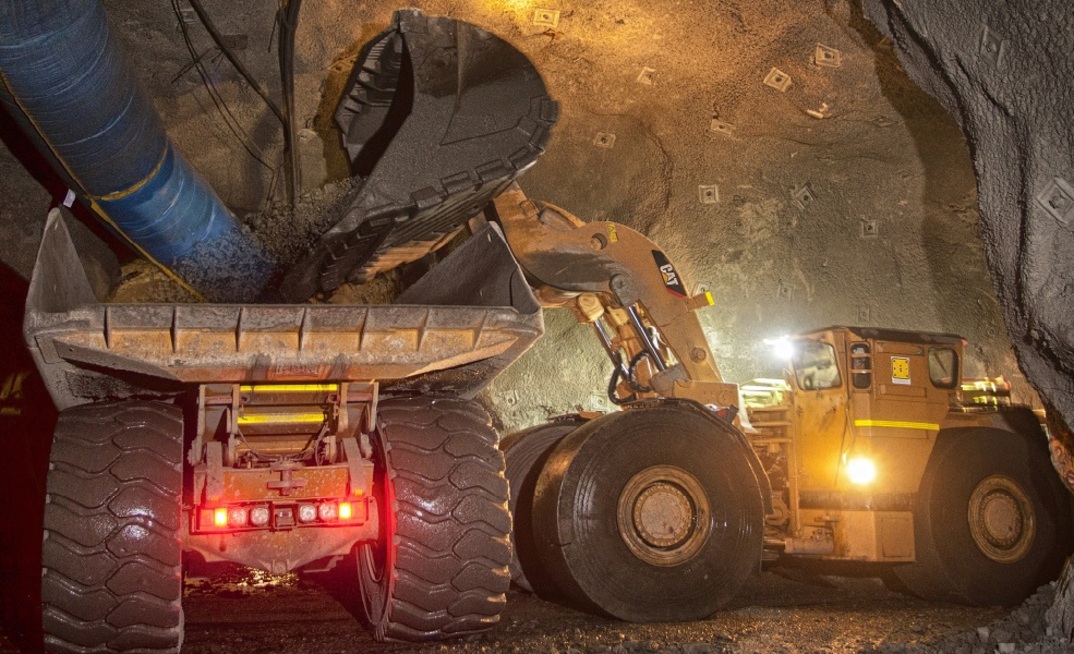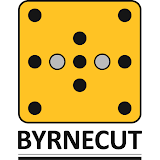Byrnecut, a leading international underground hard-rock mining contractor with its global headquarters and traditional operating base in Australia, is working at many of the country's best-performing sites, including Jundee, Gwalia, DeGrussa, Prominent Hill, St Ives and Carosue Dam.
Stellar operating results in the latest fiscal year, ended June 30, have not only fired up equity markets, but delivered cash windfalls that are funding aggressive exploration and helping to drive new corporate development.
Jewells in the crowns of their owners, the mines are, for different and similar reasons, currently some of the best performers in the world. New technology, valuable cumulative operating experience, site culture, geology, grade and geometallurgy are all factors contributing to the performances.
They come at a time of fast-paced technological change in the Australian underground hard-rock mining sector, and high-level investment in the space.
Boniwell, who has been with Byrnecut for more than 20 years, offers some fascinating insights into key drivers of operational excellence from the perspective of a contract services provider that racked up some impressive numbers of its own last year, completing 78,000 metres of mine development, producing 14.5 million tonnes of ore, 4.5 million tonnes of waste and 1.6 million production drill metres in the Australian underground operations.
Mining Journal: Byrnecut started underground development at OZ Minerals' flagship Prominent Hill copper mine in South Australia in 2010 and is coming up to eight years at the site, which produced 689,000t at 1.7% copper and AISC of US72c/lb in the June quarter. OZ is shortening the underground haul cycle with a third decline that breaks through into lower benches of the now depleted openpit. This has been Australia's largest underground truck-haulage operation?
Pat Boniwell: I don't believe anyone else is doing more. At the moment we're doing circa-3 million tonnes per annum from underground at a current run rate of about 250,000t/month. On top of the 3Mtpa of ore there is another 750,000tpa or so in waste movement as well. So in terms of the total trucking resource that's about 2 million tonne kilometres per month. That requires a fleet of 14 Komatsu rigid-frame HD605-8 trucks [and eight Sandvik LH621 21t loaders].
The major change coming up, to lift the production, is the effective short-circuit of the haulage via tipping in the [open]pit. We've completed a couple of break-throughs into the bottom levels of that pit to establish a tipping area there, so we can tip short. That effectively takes at least four trucks out of that fleet, maybe five, and we'll move more tonnes over a shorter [2.5-3km less] haul distance.
All the ore and waste gets tipped short, to be picked up by a couple of big surface trucks that can move the material far more efficiently than with the 60t [payload] underground trucks.
There are mine development increases that come with that - up to about 900m-950m/month.
We've moved to the same Sandvik 422i automated development drills there as we're using at Jundee and Telfer, and there will be some future upgrades to loader automation systems.
Mining Journal: OZ needed to finish its openpit sequencing to transition to the short tipping from underground. Now it potentially drops five trucks out of an underground fleet of 14 units, and adds the two surface trucks to get a solid boost to overall mine economics. The underground rigid trucks are a bit unusual, replacing standard articulated trucks. Why did you go down that road?
Pat Boniwell: It goes right back to 2010 and the capacity needs of the operation. But it was also speed on grade and overall lifecycle costs of those [rigid] trucks. Our original non-conforming contract tender outlined a slightly larger [6m-by-6m] decline which allowed us to use these trucks and submit a more competitive bid. So even though the decline is slightly larger you get a more productive truck in there and over the original [five year] contract there was a net saving.
We know going all the way back to the 90s at mines like Redeemer [in Western Australia] the lifecycle and cost profile of rigid trucks is always been better than the ADT. You just need a bigger area to fit them in.
Mining Journal: You're also introducing the new Joy 22HD hybrid LHDs, with the switched-reluctance hybrid drives that come out of the former LeTourneau side of the business. What's special about these loaders?
Pat Boniwell: Hopefully lots, because we've bought two of them. There are a few attractions for us. In terms of the bigger picture, they [Komatsu/Joy] have done something different and not tried to copy what everyone else has done, by making a diesel-electric hybrid vehicle. Joy has been developing this for some time. We had our guys go to the US and get involved with the development.
The first machine has been commissioned and once that's bedded in a second one will be delivered this calendar year.
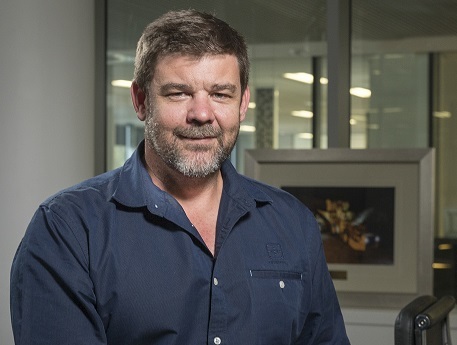
Pat Boniwell: Very strong year for Australian operations
The benefits you get with an electric drive system are really everything from 100% torque at 0kmph, better control of all wheel speeds, no transmission, no real requirement for braking with the electric motors, and the simplification of the drive system means lower mechanical costs and a 25% overall efficiency gain. Downhill electric-motor braking energy is re-used … and you can, with four individual wheel motors, very tightly control wheel speeds, which makes a difference in an underground environment where you can reduce wheel scrubbing, tyre wear, etc.
So what we want with this is a more productive machine that is cheaper to run, where we get the additional benefits of reduced emissions, longer life and better lifecycle costs.
Mining Journal: Given the positive impact they've had in the surface mining arena, why has it taken so long for electric-drive machines to be ready to impact underground mines?
Pat Boniwell: It really comes down to the lack of real estate underground for a machine with the right power to weight and size to fit in the drives and also be competitive. The new generation motors with size to power density ratio they've got, make that now workable, in terms of being able to deliver the kilowatts you need to get the performance you need.
There is a lot of hype now about batteries and battery-powered vehicles, but the biggest move I see in underground mines in the next 10-15 years is really going back to increased levels of electrification, which were there 30-plus years ago [when up to 50% of underground mining equipment was electric]. Batteries will be part of that shift, but are not the answer for the big end of town. That will be a combination of hybrids with batteries that effectively use the mix of technologies.
You get the best of both worlds with the hybrid diesel-electric, and battery power, and you get maximum operational flexibility as well.
Mining Journal: Does that re-electrification push also complement the automation push in the industry?
Pat Boniwell: I don't necessarily see a direct connection, but it's [automation] the other big piece that's obviously happening. The key constraint there has been the communication system. But that's changing pretty quickly now. My view is that the big leap forward will be driven by the communications systems because most of the automation is already there on the machines being delivered into the mines these days. Reliability of the communications is critical to achieving what is being achieved at some surface mines.
Mining Journal: Jundee, where Byrnecut started working in 2001, is your second longest running contract behind Agnew. Having been a jewel in Newmont Mining's crown, it was acquired by Northern Star Resources in 2014 and arguably now has been restored to its former glory in terms of the contribution it is making for one of the world's standout mid-tier gold companies. Northern Star now has the Jundee process plant running on 2Mtpa of underground ore and produced 91,923oz at AISC of A$813/oz in the June quarter. Stoping rates went up to about 120,000t/month in the quarter, from 90,000t/month in the first three months of the year. And the site's development rate needs continue to be high.
Pat Boniwell: Yes, the total ore moved is about 160,000t/month, with 40,000t/month from development. We've just ramped up development to 1,750m-plus a month: we had four jumbos sitting on the 1,450-1500m/month, and added a fifth.
We have more than 320 people at Jundee, which is on a par with Prominent Hill in terms of total people numbers. Our only bigger site is Telfer with around 400 people.
Mining Journal: Northern Star has had tremendous exploration success and continues to spend heavily on near-mine drilling and other activity.
Pat Boniwell: Yes, they have announced significant upgrades in the overall resource base and life-of-mine. They have added a lot of value to that project, and their investment. Newmont had it being written off within two years and they're now looking at having another 5-7 years locked in, plus maybe another five on top of that.
Newmont were there for well over 10 years and every year they tried to replace what they depleted and essentially, except for the last few years, had five diamond drill rigs operating there the whole time. It's just one of those mines, being a narrow-vein gold mine … with the production and development rates needed you have to drill the bejesus out of it to maintain the [mining] inventory.
We would obviously like to be there until they close the gate.
Mining Journal: You have been getting excellent results with the Rhino 100HM raise boring machine you've been using at Carosue Dam [Saracen]. You were hoping to put one to work at Jundee?
Pat Boniwell: Yes, it's a very productive machine, true one-man operation, and a move away from traditional rise mining. You get much greater flexibility on the rise angles because there is no-one in the hole obviously. At Jundee we have the ability to do all the mechanised slots with the one machine [with] no need to use ladders. Depending on ground conditions we'd expect to get somewhere between 300-500m/month with that machine, comfortably.
Mining Journal: Any sites in the Byrnecut portfolio compare with Jundee in terms of development metres versus production, in terms of that level of intensity and scale?
Pat Boniwell: Over a long period, consistently, to achieve between 350-400m per drill, with all the ground support, etc, thrown in, I don't know of anywhere else that has been that consistent in Australia. Offshore I think you'd probably struggle to find something comparable.
There are operations that might do more metres per drill at different times, but as a long-term, highly efficient operation it continues to be one of the best going around.
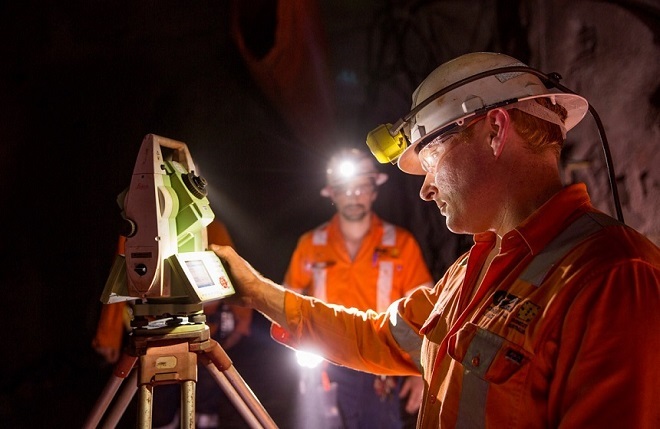
Mining Journal: Gwalia, which St Barbara has just reported exceeded expectations in FY2018 with production of 268,428oz during a big year of project expansion activity in and around the mine, is special for different reasons?
Pat Boniwell: Yes, it's especially deep and probably the deepest underground trucking operation in the world. We're certainly pushing the envelope now in terms of total trucking distance and depth; we are hauling 12km now from underground. I don't think that's been done anywhere else. It's a great orebody that just seems to be going to the centre of the earth, and the grade is obviously holding up well.
With depth comes heat [hence the new major ventilation project], stress, and more challenging ground conditions generally. But the overarching production rates have been fairly constant there for some time. The extent to which we've been able to improve trucking efficiencies and so on has been fairly incremental. A lot of that is realising the small opportunities. Given its importance to St Barbara they have had a particularly heavy focus on it and how they can do something different to enable this mine to stay economic at plus-2km [vertical] depth. And that includes the examination of the hydraulic lift technology.
We have worked closely together on a number of fronts, including assessing new truck technology, but on everything and anything really that can assist with the overall productivity of the mine, or the cost of the mine … from ground support, to mining methods, and new technology and equipment.
Mining Journal: So you are getting four, maybe five, truck loads per 12-hour shift, with average haul times from underground being circa 1.5 hours. If there was a quintessential site for automating truck haulage that would be it wouldn't it?
Pat Boniwell: It makes sense and everyone is pushing for it. The key constraint generally for these types of underground mines with established infrastructure is that the built-in confinement [of the mine] creates interaction issues that you can't just manage away. If you have got an automated machine running around, you've got normal service functions that have to happen, and if you've got a single access [decline] you all have to travel on the same road.
That's why loader automation has happened so much faster - they can be ring-fenced into certain levels and areas. There is no-one else there, fine, go and operate on full automation. But as soon as you come off that level onto the decline, as your only access, then suddenly you've got all the other trucks, loaders, graders, ITs, light vehicles, etc.
So that's the major constraint.
Just sitting down doing a risk assessment on that starts to bend your brain as to how you can segment the mine and compartmentalise it, to establish fail-to-safe systems so no-one can get into a zone that means they would interact with an automated truck.
But there is a lot of push for that [automation] in the industry. In a perfect world you have a one-way loop with two declines, and a number of mines are looking at those development options now.
Mining Journal: Byrnecut successfully re-tendered on Sandfire's cornerstone DeGrussa mine last year, and you are also developing Sandfire's new Monty underground. DeGrussa in FY2018 produced 64,918t copper and 39,273oz gold at US$0.93/lb C1 copper. The mine produced 1.67Mt last year at an average 4.3% copper.
Pat Boniwell: Yes, a high-grade copper producer and we extended that partnership [with Sandfire] to Monty where we started the portal in September last year. That's also now going very well.
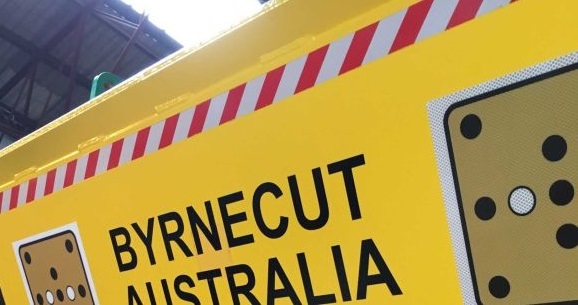
Mining Journal: Just on a more general note, the industry continues to talk about operating margins and maintaining cost discipline, including both capital and operating costs. We've seen a prominent ASX-listed gold miner buy a specialist contractor to absorb skills, and fleet, and also, it said, cost margin. Northern Star is investing very significant dollars into a Kalgoorlie underground training initiative. What are these developments saying about the importance of that specialised skills base, which also relates to comments by Northern Star executives, among others, about the increasing reliance on underground mine production in future?
Pat Boniwell: We have seen references to "typical margins in underground contracting" in the 13-20% range - and higher when things are going well - that are, quite frankly, laughable. You only need to look at the published results of listed contractors. Our results over the last 20 years also show we have never reached the lower end of that margin.
The inherent value in a services business is the people and I don't think it matters too much what sector you look at. Anyone can buy a truck or a drill - it's the people that drive the process, the systems and the operations. We have honed skills, and processes and systems over more than 30 years.
There is always that philosophical debate in the industry about what is outsourced and in-sourced in the business model. Maybe it's an economic debate.
I am a contractor so you can take everything I say with a grain of salt, but I see merit in asking the question, if you are a resource owner and a ‘miner', why would you bother operating because the real value in a publicly listed mining company, and the incremental value deliverable to shareholders, is mainly in increasing the value of the resource base and the asset, not operating the asset. It is not in the plant and equipment fleet, and any incremental benefit you might get by operating it yourself, through some margin saving.
If I take that $30 million, or 40 or 50 million that I might spend on a fleet or opex over 12 months, and smash that into the ground in the form of diamond drilling, and potentially increase the value of my resource by $500 million … Is that where I'm going to get the best return on that investment?
On the skills question, whether it's technical skills capability - geology, geotech, engineering, survey etc, skills - or leadership, I think every mining company needs to be doing that. There are not enough of those skills around. The current low graduate intake [at universities around Australia] is alarming, and pretty dire if you think about what is likely to happen in the next couple of years in terms of the industry's requirement.
We [Byrnecut group] take pretty much as many mining graduates as we can get every year. Some don't end up working for us for a long period of time, but we do have a number of young guys who've been with us for 10 or more years. Our simple view is whether they work for us long term or not, they're either working for us, or working for a client that we're going to be working for at some point. It's just something that continues to pay benefits over the long term.
We also have 75-76 apprentices and that number has been pretty constant for a long period of time.
We'll hopefully look to expand that a little bit more again next year and again, there is a benefit for us either way. They finish their time and stay with us or they end up within the industry.
And I think if there had been more of an investment like that by a number of companies over the past 15 years we wouldn't be going through another shortage like we're going through now.
ABOUT THIS COMPANY
Byrnecut
Byrnecut Australia is the leading mechanised underground mining contractor in Australia offering a professional, reliable service optimising the development and production of mineral resource projects.
CORPORATE OFFICE:
- Address: Level 1 Bravo Building, 1 George Wiencke Drive, Perth Airport WA 6105
- Tel: 08 9270 1000
- Fax: 08 9270 1001
- Web: www.byrnecut.com.au/



